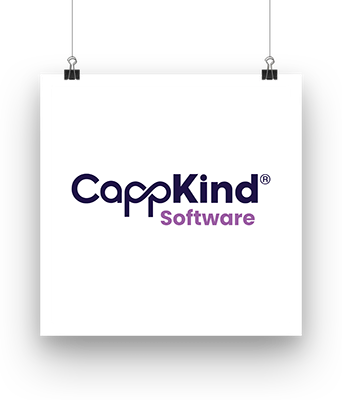Web Application Open Platform Interface, known as WOPI, is a technology provided by Microsoft that allows one to integrate the web versions of the Microsoft Office applications directly into your web application.
WOPI integration can be a complex and confusing process, and is best handled by specialists. Here at McKenna Consultants, we have been successfully implementing Microsoft WOPI in .Net Framework, .Net Core, Java, Node and PHP for our clients for many years. We have extensive experience with other web technologies beyond these too.
For more information about WOPI integration, get in touch with our WOPI specialists or check out our guide on using WOPI to embed Microsoft Office over on our blog.

Introduction to Microsoft WOPI Integration
The Microsoft Web Application Open Platform Interface (WOPI) integration is a powerful tool for cloud storage providers looking to enhance their services. By leveraging WOPI, users can access and edit Microsoft Office files directly from within your SaaS application, providing a seamless and efficient experience. No longer will your user need to download to desktop, update and reupload files to your platform (with all the associated conflict problems). The WOPI protocol is a key component of the Cloud Storage Partner Program, enabling clients to access and change files stored on a server with ease.
What Is The Cloud Storage Partner Program?
The Cloud Storage Partner Program is somewhat confusingly named. In the early days, the core program members were companies such as Dropbox and Box who were focussed on providing cloud storage SaaS to their customers. Now, the program is utilised by a much wider variety of SaaS providers including legal software SaaS, work management SaaS, auditing SaaS and more.
Microsoft’s WOPI integration offers a web application open platform interface that allows developers to create applications capable of interacting with Microsoft Office. The WOPI client plays a crucial role in facilitating communication between the cloud storage provider and Microsoft’s servers, ensuring smooth data exchange and file management. By joining the Cloud Storage Partner Program, members can leverage the WOPI protocol to integrate their services with Microsoft 365, significantly enhancing the user experience and offering a more comprehensive service.
Benefits of WOPI Integration
WOPI integration offers numerous benefits, including enhanced collaboration and productivity for users. The ability to access and edit Microsoft Office files directly from cloud storage eliminates the need for manual downloads and uploads, streamlining workflows and saving time. Additionally, WOPI integration provides a secure and standardized way for clients to access and modify files on a server, reducing the risk of data breaches and ensuring data integrity.
The Cloud Storage Partner Program supports WOPI integration, enabling providers to offer a more comprehensive and integrated service to their users. By leveraging the WOPI protocol, cloud storage providers can differentiate themselves from competitors and attract more users. WOPI integration is also an important aspect of Microsoft 365, enabling users to work seamlessly across different devices and platforms, further enhancing productivity and collaboration.
WOPI Service Offering
You can choose to appoint us at the beginning of your implementation or we can join your in-progress WOPI project. Every client is unique and requires a specific blend of these service levels:
- CSPP Consultancy Service
To integrate applications with Microsoft 365 for the web using the WOPI protocol, one must be a member of the Microsoft 365 - Cloud Storage Partner Program. We’ll help you out with the Cloud Storage Partner Program. We’ll help you understand their policies, procedures, and timelines. We’ll help you compose your WOPI implementation verification submission and guide you through the process.
- Full Development Service
This is a complete WOPI implementation service. We will implement your WOPI hostpage, do updates to your application workflows to support WOPI, and implement the complete WOPI API. Pick this option if you just want someone to sort out WOPI for you and you don’t want to get involved yourself.
- Split Service
We will implement your WOPI API microservice whilst you implement the hostpage and update your core application workflows. This is a very popular option as it allows you to retain control of your area of expertise and we can control the code within our area of expertise.
- Technical Advisory Service
For this option, you are planning to do all of the implementation work yourself, but you want a technical expert to help you out with initiating the project and being on call to explain any technical of WOPI that prove difficult to understand.
- Rescue Service
This is the service that you never want! Here, you have had a go at implementing WOPI and the complex implementation has resulted in an incomplete, less-than-well-structured solution. Here, we will get you back on track and over the finish line and live with WOPI!

Facing WOPI Challenges?
Implementing WOPI for Office 365 is a technical process that can come with many unique challenges. At McKenna Consultants, we have implemented multiple architectures for the WOPI microservice with varying degrees of dependence on the core web application (mostly based on the client’s existing system limitations).
Our typical technical solution is to create a multi-tenant microservice that implements the necessary WOPI API features (such as versioning, SHA256, Locks, correct response codes etc). The WOPI microservice then interfaces with your core web application.
You can find our guide to troubleshooting WOPI API over on our blog.
From a process perspective, WOPI integration involves complying with many constraints imposed by Microsoft. These include (but are not limited to):
- User interface requirements
- Semi-automated testing requirements
- Protocol requirements
We have extensive experience with Microsoft’s rules and constraints and our understanding and support can help guide you through a successful acceptance test.





